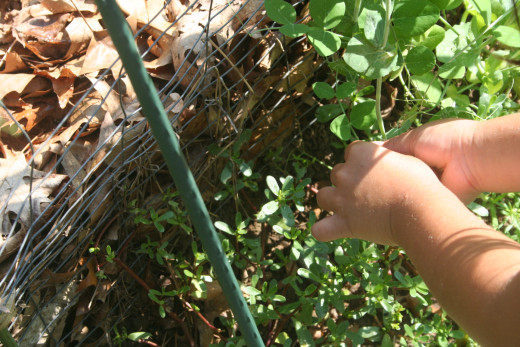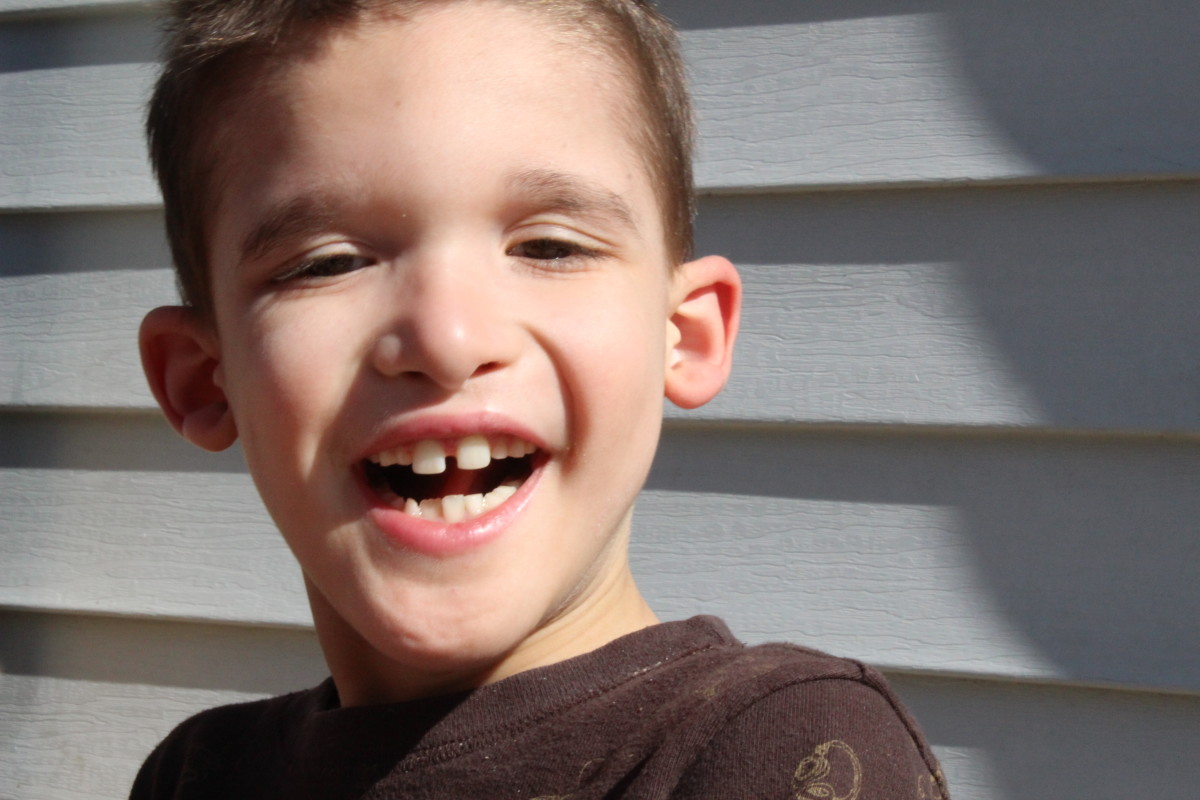8 Strategies for Curbing Behavioral Issues in Children with Special Needs

Introduction.
My son has special needs. We've been through several years of therapy and training, but yet our life is still evolving with the needs of my son.
My son's teacher asked how we cope at home with behaviors such as aggression, hyper-activity, no respect for personal space, interrupting, and the like, because he recently started having trouble coping in school.
Every child is different. There are strategies we can teach our children that can be very effective if we do them consistently. This means the schools have to be willing to administer the same strategies in school as the families follow at home. Otherwise, the daily life of a child with special needs becomes chaotic, unstructured, and confusing. To hear my son's school is willing to implement the strategies the medical community has taught us to use at home was a relief.
When my son was initially diagnosed with Autism, I had no idea what I was doing. I had no idea how to handle certain behaviors. It's my hope, that these strategies are useful to other families to create a better life for children with special needs.
Red Light, Green Light
|
|---|
Has anyone taught your child this coping concept?
|
If your child is in the "red", it means they cannot participate until they are in the green. Red means stop.
|
If your child is in the "green", it means they are behaving safely, they are listening, they are understanding instruction, and they are willing to cooperate. Green means go.
|
If your child is in the "yellow", it means they are in-between red and green and need to adjust their behavior to be fully in the green.
|
Removing art, music, and gym is not the answer!
Sometimes, schools have a tendency to remove fun things from a child with special needs such as art, music, and gym.
Children with special needs thrive in these areas. It's important to maintain a balance for a child with special needs in school.
Removing art, music, or gym from a child with special needs leaves them with nothing but math and language. It's not a fair balance.
I am against removing art, music, and gym from a child with special needs as a punishment!
1. Reinforce Positive Behavior.
Without a doubt, children with special needs need a lot of love, attention, and support from their parents and/or caregivers.
- Praise the child often.
- Reward the child immediately for positive behavior. "Catch" them at being good. Whether it be good manners or sharing, tell them good job and clap out loud. It builds confidence in a child and serves as a pleasant reminder that those behaviors are well-received.
- Set up a sticker chart. Place it within eye level of the child, such as on a bedroom door. Create a sticker reward system for good behavior and reward the child with a prize after accumulation of a certain amount of stickers.
- Maintain a weekly reward system. At the end of the week, allow the child to pick a prize from a small goody box for a job well-done.
By teaching the child that the good behavior comes with a reward, the child will make it a goal to pursue the reward.
In the event that the child's behavior doesn't go well, it's important to not take something away. For example, do not remove stickers off of the chart. Instead, the child doesn't earn a sticker for that behavior, but there will be other chances to earn stickers.
2. Distraction with a fun activity.
When my son attended summer camp last year, he was placed with a full-day aide in special needs. There were times in the morning when I dropped him off that he had trouble transitioning to the camp setting. Another child noticed and immediately began distracting my son by showing him funny pictures hanging on the wall!
What a blessing this little girl was to my son. And she totally understood him. I wish more adults could grasp this concept.
If a child with special needs is having a difficult time transitioning or adjusting to a different setting, it's important to keep your child focused.
In order to accomplish this, distract your child with a fun activity or something your child likes.
3. Offer up to 3 choices so your child feels more in control.
Imagine your day starting out great. You wake up, brew a fresh pot of coffee, and start breakfast. You are half-way through flipping the sunny-side-up eggs, and your child storms out of his bedroom and starts twirling in circles around you and the hot stove.
As the caregiver, you must divert your child's attention to something else and quickly. First thing in the morning, before your first cup of coffee, your brain might be feeling too tired to deal with anything at the moment. So it's important to understand this strategy.
It is very effective to enable your child to feel in control. By offering three choices to your child, you are giving your child the power to choose.
In order for it to work correctly though, you need to set the choices to things that you want your child to do.
For example, you don't want your child around the kitchen while you are cooking, so you offer the following choices:
- You may get dressed; or
- You may make a bowl of cereal and sit down to eat it; or
- You may play a quick game on the computer until breakfast is completed.
Obviously, these choices will be personalized to your daily routine, and limited to the tasks that your child needs to accomplish in the morning. If your child can't make a bowl of cereal or get dressed by him or herself, adapt the choices to what they can do.
If you are in a public place and your child won't listen to you, before the behavior escalates, offer three choices. In some instances, you may have to abandon your outing and just leave.
Tips for Traveling!
- Always have a snack packed and ready to go before the 5 minute reminder. Choose a healthy snack such as popcorn and a bottle of water.
- Allow your child to bring a goody bag in the car for something to do.
4. Offer advanced notice before transitioning by counting down.
When I was a child and my mother did not like something I was doing, I was given the warning 1 - 2 - 3. By the number 3, if I hadn't listened, I knew I was going to be in trouble. I still here this warning system in place used by other parents when I'm out in the grocery store.
This warning system doesn't work with a child with special needs. It does nothing but frustrate the child and parent even more.
Before I was taught about advanced transitioning count-downs, my son had terrible challenges putting his shoes on in the morning. It was difficult to go anywhere without planning an hour in advance because my son refused to cooperate and ended up in a severe meltdown.
How easy life became once I learned about this simple and effective strategy!
- Place a digital clock and manual clock in your child's room. Even if the child can't tell time yet, it will help them learn. This visually enables your child to grasp the transition that will be happening.
- Keep a calendar in the kitchen with weekly appointments. Besides school, any activities, fun outings, or doctor appointments should be noted.
- Place a chalkboard or white board in your child's room and write down the appointments for that day and the time. (Some therapists suggest using picture charts for beginning readers.)
- Tell your child the night before about what is planned for the next day.
How to effectively transition your child:
- In 30 minutes, we will be leaving for the store.
- In 25 minutes, we will be leaving for the store.
- In 20 minutes, we will be leaving for the store.
- In 15 minutes, we will be leaving for the store.
- In 10 minutes, we will be leaving for the store.
- In 5 minutes, we will be leaving for the store. It's time to put your shoes and coat on.
- Ok, we are ready to go!
It's truly amazing how this simple technique really works if you keep it consistent and incorporate this strategy as part of your daily routine.
Family pets should never be alone with a child during Take Space.

5. Self-calming techniques.
During periods of stress and anxiety, your child may have trouble coping. Time-out has been proven ineffective for children with special needs.
Instead, use Take Space.
- The child's bedroom should be a comfort zone to assist your child in feeling secure. A safe and clean room needs to be available to your child. If your child is acting out anxious behaviors and wants time alone, offer Take Space. This would be accommodated in the child's room without punishment. For example, play soft music, turn the lights low, help your child feel at ease by minimizing the other household distractions in other rooms. Pets should not be left alone with your child during Take Space.
Using a stress ball can be helpful to a child who becomes hands on and touches everything. Having something for your child to occupy his or her hands is very effective. Last year in school, my son carried a water bottle with him. The school psychologist said it helped him occupy his busy hands so he didn't get in trouble touching everything around him.
Allow your child to engage in throwing a soft ball. Foam balls as well as soft-tip dart boards are great distractions for a child who engages in throwing things. The action of movement often helps a child feel calmer.
Playful activities will help your child work out their energy naturally.
- Running around the yard.
- Walking the family dog.
- Going to the beach.
- Using an exercise ball in the living room.
- Walking on a treadmill with supervision.
- Jumping rope.
- Jumping jacks.
- Push-ups.
6. Setting up a play area for your child.
My son often likes to spend time in his room alone. His favorite toys are legos. We built him a lego center in his room so that he can feel free to play with his favorite toys whenever he wants. The legos are stored in soft bins on a low bookcase that can't be tipped over. He can access the legos easily and spends hours building things from his imagination.
Play areas can be designated in a corner of a room. Make sure there are no toys that are harmful to your child. If your child throws things, it's best to keep die cast toys out of reach.
I've worked with girls who loved to play with soft dolls and soft play purses.
When my son was a toddler, I made play food out of felt because I could only find wooden play food at the store. Because he threw things, it wasn't safe for him to play with wooden toys.
Provide soft, safe toys for creative play!

Teaching your Child about Errands
| How
|
|---|---|
Plan an opportunity to take your child on an errand.
| Schedule a trip to the store with your child and plan on offering your child a reward for participating in the errand.
|
Grocery stores and Walmart may be overwhelming to a child with sensory issues.
| Start out by going to a local store where it's less intimidating.
|
Plan your trip around your child's tolerance for the errand.
| Don't expect to stay at Walmart for 20 minutes. Instead, plan to get 1 thing for a quick trip.
|
Offer your child a choice.
| Do you want to go to the bank or the post office?
|
Some states offer therapy for life skills. Therapists will take your child shopping and teach them how to cope in a store setting. My state doesn't currently offer this.
7. Encourage your child to use coping skills with reminders.
By reminding your child to use coping skills when they appear agitated, your child will learn to help calm down faster.
Be pro-active rather than re-active. Don't let your child's frustration escalate. Help them cope by offering them choices.
Teach your child the effective strategies set forth in this article and remind your child to use them when they feel angry, sad, frustrated, helpless, upset, left out, etc.
Offer your child options:
- Do you need to take space?
- Would you like to read a book?
- Do you need to use a stress ball?
- Do you need to walk it off?
- Do you want to go outside and run around?
- Do you want to help me walk the dog?
If all else fails, it may be appropriate to change environments. Take your child to the beach, indoor play area, or visit relatives. This may not always be possible, but it may help to change scenes.
Change of scenery helps turn your child's attention about from negative behavior.

It may be a matter of medication!
|
|---|
If your child's inability to cope has suddenly become very strained, it may be time for a medicine adjustment or evaluation.
|
If your child has trouble cooperating in a public place, what do you do?
8. Remain calm, but firm.
Raised voices, shouting and yelling never help a situation in which a child is having difficulty coping.
Becoming impatient also increases a child's anxiety and unwillingness to cooperate.
If your child is unable to cooperate, it can be difficult to effectively handle a situation away from home. There aren't many public places which offer Take Space areas. It would be awkward to handle a situation in a store for example.
Speak to your child in a calm voice, but let them know there are boundaries and rules. Your child needs to understand that there are some behaviors that are off-limits anywhere.
Keep the matter as quiet and private as possible when out in public. It's been my experience that many people have a lack of understanding about special needs children and what parenting them entails. It's best to keep it quiet instead of causing a scene, which only escalates matter and makes it worse!
Conclusion.
Taking away fun privileges and toys is not an effective strategy for teaching coping skills to children with special needs
In strategy 1 above, we discussed how to reinforce positive behaviors. When a child has special needs, taking something away is ineffective because your child doesn't have reasoning skills that can be applied to the concept of removing their favorite toy. It is actually harmful to their progress because it exasperates anger and frustration.
This is why therapy begins with positive reinforcement. Placing a sticker on a chart for a child is a visual stimulant. It transmits a message to the child that what they did proved to be rewarded and recognized as good.
However, if a child is being unsafe, then taking away a toy used to hurt is encouraged. Packing away the tote of die cast toys is recommended, not for punishment, but for the child's safety. It's conceivable that the child could throw the toy and hurt someone.
Re-assessing the child's play area is reasonable to ensure that the toys are age-appropriate and safe.
The ultimate goal in implementing these strategies is to help your child feel secure, safe, and to teach your child how to appropriately respond to situations on their own. If they feel anxious or nervous, they can re-direct themselves to take space, throw a foam ball, listen to music, or do an activity to help calm down.
All children are different. Perhaps you have strategies of your own that have worked for your child? Please consider sharing them here to help others learn how to provide support to families of children that may be seeking strategies instead of punishments.








